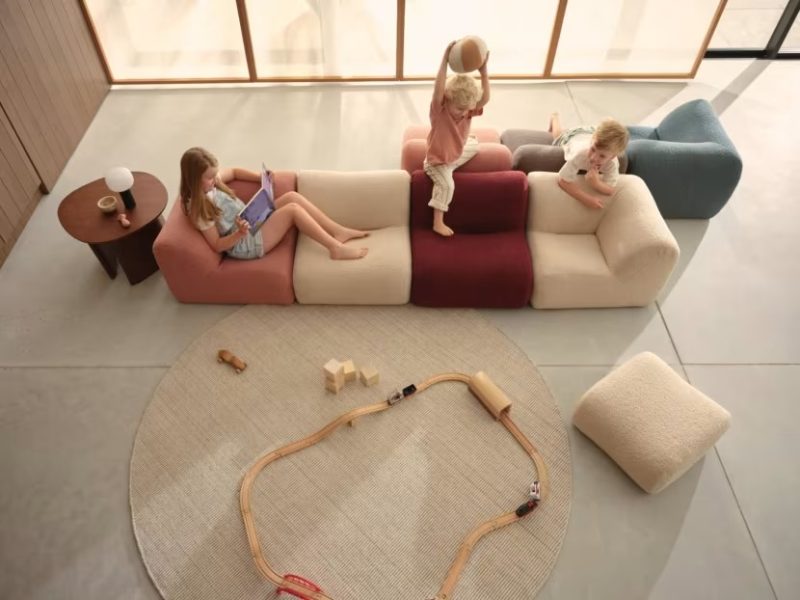In the realm of interior design, the role of furniture transcends mere functionality—it defines and transforms spaces. Luxury furniture elevates this transformation, merging exceptional craftsmanship, exquisite materials, and innovative design to redefine the aesthetics of any interior. This comprehensive exploration delves into how luxury furniture not only enhances spaces but serves as a cornerstone of modern living environments, embodying artistry and luxury.
The Essence of Luxury Furniture
Luxury furniture distinguishes itself through an unwavering commitment to quality and aesthetics. It is defined by the utilization of premium materials such as exotic hardwoods, top-grade leathers, and finely crafted metals. These materials are chosen not only for their endurance but for their ability to impress and express opulence. Each piece is a testament to artisanal skill, where meticulous attention to detail and bespoke craftsmanship ensure that no two pieces are identical.
Historical Roots and Modern Interpretations
The design of luxury furniture is deeply rooted in a rich history of furniture making. From the ornate styles of Baroque to the minimalist lines of modern Scandinavian design, luxury furniture makers draw inspiration from a vast temporal palette. They reinterpret these influences through a contemporary lens, producing pieces that are both timeless and avant-garde. This blend of old and new allows luxury furniture to stand out in any setting, providing a link between the past and present of design aesthetics.
Design Principles
At the heart of luxury furniture design lie core principles that balance innovation with tradition. The designs often feature a harmonious blend of form and function, ensuring that each piece is as comfortable as it is visually compelling. This balance is meticulously cultivated through design processes that consider ergonomics, aesthetics, and the overall flow of space. Designers focus on creating pieces that enhance the usability of spaces while serving as stunning visual anchors.
Customization and Personalization
Luxury furniture is notable for its extensive customization options, which allow buyers to tailor pieces to their specific preferences. Whether it’s selecting from different wood finishes, fabric types, or metal accents, the ability to customize adds intrinsic value to the furniture. This personalization makes each piece a reflection of the owner’s taste and style, ensuring that it not only fits the physical space it occupies but also resonates with personal aesthetic sensibilities.
Psychological Impact and Emotional Resonance
The influence of luxury furniture on spaces extends beyond the physical to the psychological. A well-designed piece of furniture can alter perceptions, making a space feel more inviting or more formal, depending on the intention. The choice of materials, colors, and textures plays a crucial role in this, as these elements can evoke a wide range of emotions and responses from those who encounter them.
Impact on Spaces
The transformative power of luxury furniture within spaces is profound. Strategic placement of key pieces can redefine room dynamics, dictating flow and focal points. For instance, a luxurious leather sofa can anchor a living room, drawing the eye and serving as a centerpiece around which all other elements revolve. Similarly, an elegantly designed credenza or a sculptural coffee table can alter the aesthetic and functional landscape of a space.
The Role of Technology in Luxury Furniture Design
Advancements in technology have also impacted luxury furniture design. From computer-aided design (CAD) tools that allow for precise engineering to advanced manufacturing techniques that expand the possibilities of form and function, technology enables designers to push the boundaries of what furniture can be. Moreover, technology facilitates greater precision in the customization process, ensuring that the finished products are perfectly aligned with client expectations.
Sustainable Luxury
The modern luxury furniture market is increasingly aligning with sustainability. This movement towards eco-friendly practices is evident in the choice of materials and manufacturing processes that reduce environmental impact. Sustainable luxury furniture not only appeals to environmentally conscious consumers but also contributes to a broader narrative of sustainability within the luxury goods industry, proving that luxury and eco-responsibility can coexist.
Market Trends and Consumer Preferences
Understanding current market trends and consumer preferences is crucial for luxury furniture brands. As consumers become more knowledgeable and discerning, they seek pieces that not only display exceptional craftsmanship but also reflect their personal ethics and lifestyle choices. This has led to a diversification in the luxury furniture market, with brands offering a range of styles from ultra-modern minimalist to richly traditional to cater to varied tastes.
Challenges and Opportunities
The luxury furniture industry faces several challenges, including navigating the complexities of global supply chains and meeting the high expectations of a discerning clientele. However, these challenges also present opportunities for innovation and growth. By embracing new materials, technologies, and sustainable practices, luxury furniture brands can enhance their appeal and continue to thrive in a competitive market.
Conclusion
Luxury furniture design is much more than the creation of high-end furnishings. It is an art form that plays a pivotal role in transforming spaces and enhancing lifestyles. Through a blend of artistry, innovation, and craftsmanship, luxury furniture continues to push the boundaries of design, offering new ways to experience and interact with our environments. As we move forward, the integration of technology and a strong emphasis on sustainability are set to redefine the luxury furniture landscape, promising a future where beauty and responsibility go hand in hand.







